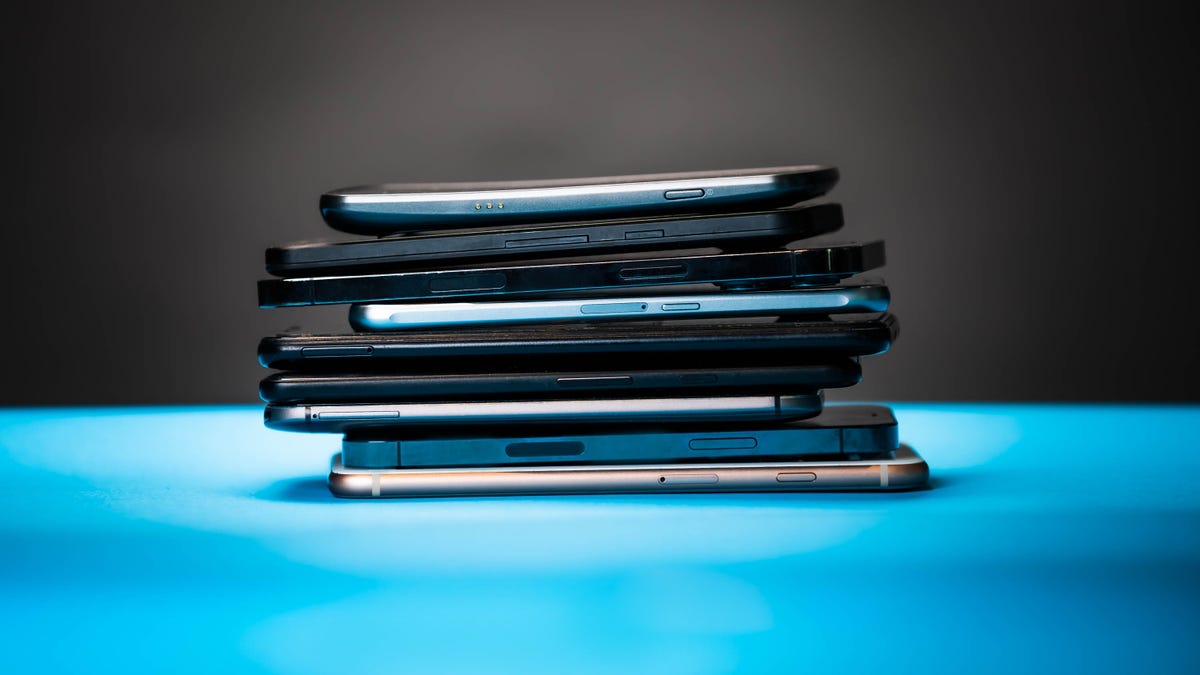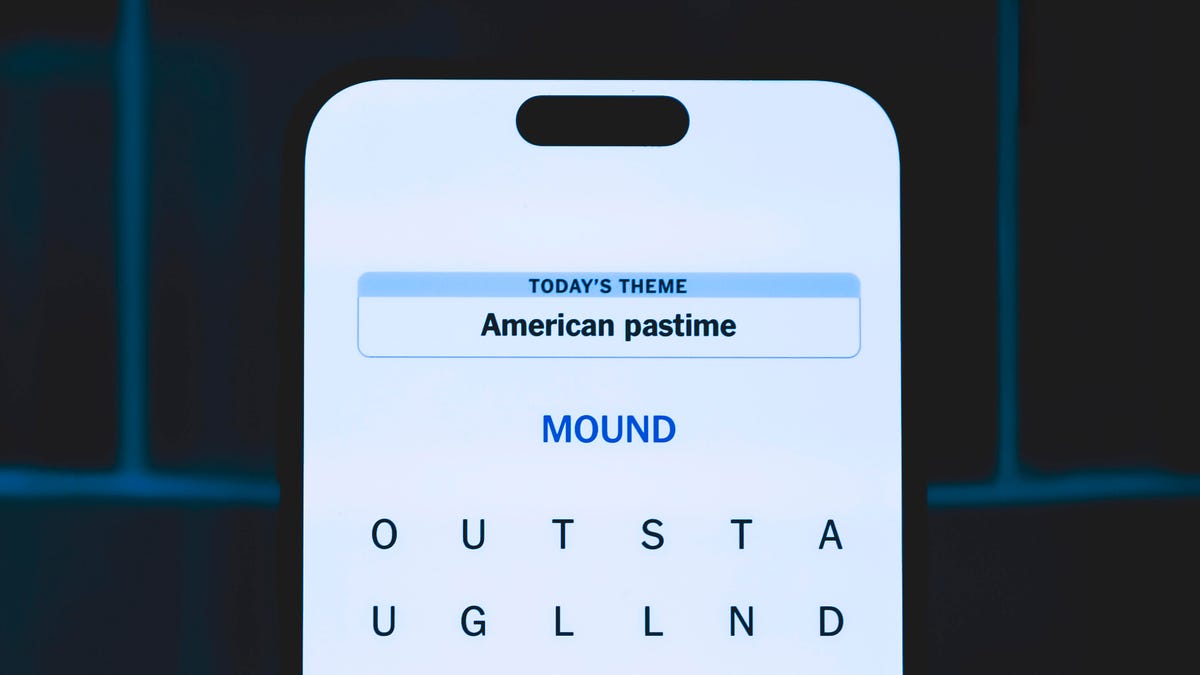Technologies
How CNET tests phones
What goes into a CNET smartphone review

Phones are much more than communication devices; they’re our gateway to the internet. They’ve become the center of our daily lives, housing our personal information, work essentials, personal memories and enabling us to reflect our personalities online. That’s why CNET conducts rigorous tests to help you find the right phone for your budget and needs.
When reviewing phones, we take a variety of factors into account such as camera quality, battery life, design, software and longevity. Every phone is different, but our testing allows us to answer the same question in each review: Is this phone worth buying? We evaluate phones based on the quality of their hardware and software, whether they introduce any meaningful new innovations and whether they’re the right price.
We replace our personal phone with the test unit during the review period so that we can get an accurate impression of what it’s like to rely on the device for daily tasks. In addition to this anecdotal usage, we also conduct specific side-by-side tests against other phones as part of the evaluation process.
We generally test phones against their immediate predecessor, competing phones from other companies or another phone within the same product line (for instance, iPhone 14 versus iPhone 14 Pro). We focus on whichever comparisons are most useful for helping our readers navigate the buying decision, and that may vary depending on the phone. Whenever possible, we work all three types of comparisons into a review.
Some of these methodologies are relatively new to CNET’s testing procedures, so you may not see them in all of our reviews from 2022. We’re in the process of updating our current reviews with these tests and plan to implement them fully in 2023.
Below is a general overview of what goes into a CNET smartphone review.
Testing smartphone cameras
The camera is the biggest area where companies like Apple, Samsung, Google and OnePlus typically make improvements to new models each year, and our reviews put phone maker’s claims to the test. We take photos in a variety of circumstances and lighting conditions, including bright outdoor areas, dim indoor settings and mixed lighting.
We capture a variety of subjects (objects, pets and people) to assess boldness, sharpness, skintones and color accuracy. We test all of the phone’s main lenses (wide, telephoto and ultrawide), front-facing cameras as well as different shooting styles, like portrait mode and night mode. Our reviews also cover useful editing features or shooting modes that are specific to the device, such as the Google Pixel 7’s Face Unblur or the iPhone’s Cinematic Mode.
Part of these tests include side-by-side photo comparisons between the phone we’re reviewing and previous phones we’ve tested. We evaluate a phone’s cameras on their consistency as well as how they stack up against the competition. All photos are straight out of camera and accessed without any edits, unless specifically noted. Beyond the initial impressions we get from viewing these photos on a phone’s screen, we also upload them to a computer and view them alongside one another on a monitor. This reduces any bias that may come from the different screens on each phone. It also makes it easier to view discrepancies in clarity and color between each photo.
We also capture video with the review phone and judge it on its image and audio quality. Just because a phone can capture 6K or 8K video doesn’t mean it’s good. Unlike the computational photography algorithms that Google, Apple, Samsung and others apply to photos, videos remain relatively less processed, making it easier to critique a camera’s strengths and flaws.
Testing smartphone performance
The performance section of our reviews examines how responsive phones are in everyday use, how well they juggle multiple tasks and how they fare during benchmark tests.
We do this by observing how quickly phones can open apps and launch the camera. We also note whether the phone has an adaptive refresh rate setting and how this improves performance if at all (for example, whether this makes animations and scrolling feel smoother). We also look for signs of lag when running multiple apps (such as using a social media app or playing a game while on a video call), or playing an online multiplayer game with the highest graphics settings.
In addition to these everyday tasks, we also run a series of benchmarks designed to test a phone’s computing power and graphics performance. These tests include Geekbench 5 for general CPU performance and 3DMark Wild Life Extreme for graphics. We also run the same tests on other phones that we’re comparing our test device to.
Testing smartphone battery life
We test battery life in three ways: through an anecdotal stress test, a video streaming test and by observing battery life after everyday use. As noted earlier, these tests are relatively new and we’re still in the process of adding them to our 2022 reviews.
The anecdotal stress test measures how much the battery drains after 45 minutes of general usage. We do a little bit of everything during this test to mimic authentic everyday experiences. That includes streaming video, using social media apps, playing a game, making a video call and other miscellaneous tasks like checking email. After this 45 minutes of mixed usage, we mark down the percentage of battery drain. To keep the test consistent between phones, we perform each of those tasks for roughly 10 minutes. We also keep the screen brightness set to 50%, turn off the always-on display and keep the high refresh rate setting on (if there is one).
The streaming test monitors how much the battery drains over a three-hour period while viewing a video on YouTube. We use the same video each time for consistency and set the screen brightness to 100%. We also disable settings that automatically dim or brighten the screen, connect to Wi-Fi and turn on the adaptive or high refresh rate setting if applicable. We take battery percentages at the one-hour, two-hour and three-hour marks.
Since we use test phones as our regular devices, we also discuss how long the battery has lasted in everyday use based on our experience. Often, our practical experience with a phone’s battery life can give us the most accurate prediction of what others might expect if they bought the same phone.
Testing smartphone design, software and display
Our smartphone reviews also encompass other areas like design, software and display quality. Design can be subjective, but we generally look for factors such as durability (water and dust resistance ratings), how easy the phone is to operate with one hand, the build quality and whether the design is unique or interesting in any way. For display quality, we’ll mention factors like brightness, how easy it is to see in sunlight and sharpness and color.
Software is another key part of CNET’s smartphone reviews. We mention any new or noteworthy features and how long the phone will support new versions of Android (or iOS respectively) and security updates.
Our written review tells you everything we feel and experienced, but we also give each phone overall score and star rating to provide a different context. A $450 phone might lack all the features that a $1,000 phone has, but its value might mean it gets a higher score. We also update these ratings based on a variety of factors, including software changes and quality control issues.
Reviews will always vary depending on the device, but these are the core tenets that make up a CNET smartphone evaluation. Determining a phone’s overall value is our guiding principle in every smartphone review. Our reviews shed light on whether a new phone lives up to its expectations, who the phone is for and whether it delivers on its promises for the price. We are always evaluating our own testing methodologies and looking for ways to improve, so expect to see more updates in the future.
Technologies
Today’s NYT Connections Hints, Answers and Help for Nov. 16, #889
Here are some hints — and the answers — for the NYT Connections puzzle for Nov. 16, #889.

Looking for the most recent Connections answers? Click here for today’s Connections hints, as well as our daily answers and hints for The New York Times Mini Crossword, Wordle, Connections: Sports Edition and Strands puzzles.
Today’s NYT Connections puzzle is a fun one. As a pop-culture junkie and game lover, I enjoyed the purple category. If you need help sorting the answers into groups, you’re in the right place. Read on for clues and today’s Connections answers.
The Times now has a Connections Bot, like the one for Wordle. Go there after you play to receive a numeric score and to have the program analyze your answers. Players who are registered with the Times Games section can now nerd out by following their progress, including the number of puzzles completed, win rate, number of times they nabbed a perfect score and their win streak.
Read more: Hints, Tips and Strategies to Help You Win at NYT Connections Every Time
Hints for today’s Connections groups
Here are four hints for the groupings in today’s Connections puzzle, ranked from the easiest yellow group to the tough (and sometimes bizarre) purple group.
Yellow group hint: Different strokes for different folks.
Green group hint: Ho-hum.
Blue group hint: Flags often qualify.
Purple group hint: Do not pass Go.
Answers for today’s Connections groups
Yellow group: Technique.
Green group: Run-of-the-mill.
Blue group: Stripy things.
Purple group: Words on Monopoly squares.
Read more: Wordle Cheat Sheet: Here Are the Most Popular Letters Used in English Words
What are today’s Connections answers?
The yellow words in today’s Connections
The theme is technique. The four answers are approach, method, philosophy and school.
The green words in today’s Connections
The theme is run-of-the-mill. The four answers are banal, everday, humdrum and pedestrian.
The blue words in today’s Connections
The theme is stripy things.The four answers are barcode, IBM logo, rugby shirt and zebra.
The purple words in today’s Connections
The theme is words on Monopoly squares. The four answers are avenue, parking, railroad and tax.
Technologies
Today’s NYT Strands Hints, Answers and Help for Nov. 16 #623
Here are hints — and answers — for the NYT Strands puzzle for Nov. 16, No. 623.

Looking for the most recent Strands answer? Click here for our daily Strands hints, as well as our daily answers and hints for The New York Times Mini Crossword, Wordle, Connections and Connections: Sports Edition puzzles.
Today’s NYT Strands puzzle is tough. It’s a weird theme, and some of the answers are difficult to unscramble, so if you need hints and answers, read on.
I go into depth about the rules for Strands in this story.
If you’re looking for today’s Wordle, Connections and Mini Crossword answers, you can visit CNET’s NYT puzzle hints page.
Read more: NYT Connections Turns 1: These Are the 5 Toughest Puzzles So Far
Hint for today’s Strands puzzle
Today’s Strands theme is: Around it goes.
If that doesn’t help you, here’s a clue: They’re often on a roll.
Clue words to unlock in-game hints
Your goal is to find hidden words that fit the puzzle’s theme. If you’re stuck, find any words you can. Every time you find three words of four letters or more, Strands will reveal one of the theme words. These are the words I used to get those hints but any words of four or more letters that you find will work:
- CARE, SCARE, CRASS, SWAT, PELL, HELL, SCAR, HALT, STENT, HALTS, TENT, POLL, LOTS
Answers for today’s Strands puzzle
These are the answers that tie into the theme. The goal of the puzzle is to find them all, including the spangram, a theme word that reaches from one side of the puzzle to the other. When you have all of them (I originally thought there were always eight but learned that the number can vary), every letter on the board will be used. Here are the nonspangram answers:
- FOIL, SCARF, SHAWL, STOLE, FLATBREAD, CELLOPHANE
Today’s Strands spangram
Today’s Strands spangram is THATSAWRAP. To find it, start with the T that’s three letters up from the bottom of the far-left row, and wind down, over and then up.
Technologies
Here’s How Much Tesla’s New Affordable Electric Cars Cost
What do you get with the stripped-down Model Y and Model 3? A lower price, for starters.
-

 Technologies3 года ago
Technologies3 года agoTech Companies Need to Be Held Accountable for Security, Experts Say
-

 Technologies3 года ago
Technologies3 года agoBest Handheld Game Console in 2023
-

 Technologies3 года ago
Technologies3 года agoTighten Up Your VR Game With the Best Head Straps for Quest 2
-

 Technologies4 года ago
Technologies4 года agoBlack Friday 2021: The best deals on TVs, headphones, kitchenware, and more
-

 Technologies4 года ago
Technologies4 года agoVerum, Wickr and Threema: next generation secured messengers
-

 Technologies4 года ago
Technologies4 года agoGoogle to require vaccinations as Silicon Valley rethinks return-to-office policies
-

 Technologies4 года ago
Technologies4 года agoOlivia Harlan Dekker for Verum Messenger
-

 Technologies4 года ago
Technologies4 года agoiPhone 13 event: How to watch Apple’s big announcement tomorrow

